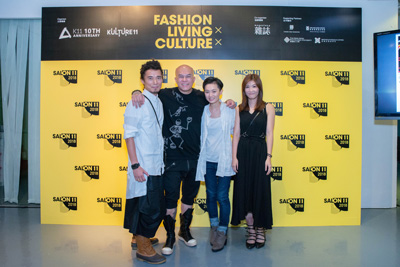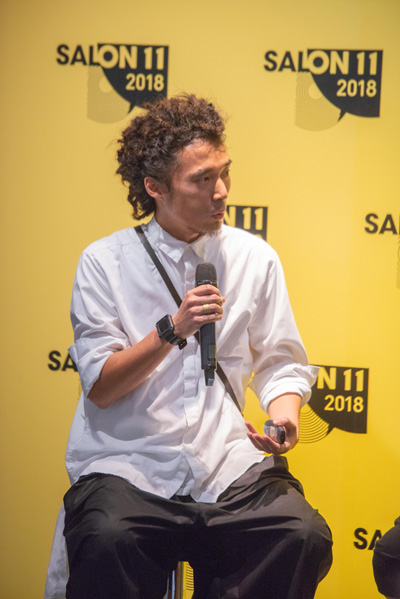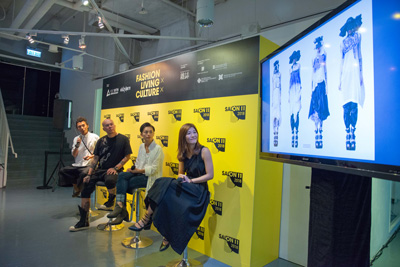Kulture Salon 11: In Search of Fashion Muse – Art, History and Tattoo
Fashion is a fast-moving industry, so fashion designers also tend to live life in the fast lane. When it comes to heralding a new season, nothing means more to them than the birth of a new collection which the spotlights and fashionistas await. Kulture Salon 11, a cross-cultural open platform organised by K11’s Kulture11, brings together cutting-edge fashion designers and cultural practitioners for revealing dialogues. In one of its August sessions, our Fashion Incubation Programme’s own Yeung Chin was invited to share with the public his design vision and how he squeezes his creative juice every season, alongside tattooist Gabe Sum and fashion designer Janko Lam.
For Yeung Chin, fashion design means much more than just creating fabrics and garments. He draws his inspiration from Shuji Terayama’s films, plastic surgery and boxing. “My fashion inspiration comes from my art practice.” His design approach is driven by his aesthetic exploration through different art forms, from installation to photography. The aesthetic results would eventually be transformed into his fashion products. Take his groundbreaking project Indigo Rain in 2015. It started with a floating installation of a thousand glass bottles which dripped indigo ink from the ceiling. Dancers moved in the “indigo rain” and the -- DROPlets organically dyed their garments. The patterns formed embodied the art and later evolved into his actual design elements. “My art is infused into my clients’ daily lives through my designs. What they put on is not just a piece of garment, but an attitude to life.”
Having established his eponymous brand in 2013, Yeung Chin has been taking part in design week events in New York, Paris and Shanghai since 2015. Increased funding from the government played a role in his brand’s development. “From a little shop in PMQ, we now have points of sales in different corners of the globe including Italy, Paris and the United States.” His unique noirish style may not be mainstream, but it has charmed fashion markets worldwide. “We nailed orders the first time we participated in a large fashion show in Paris though we’d been told that many couldn’t. Our vivid brand image is a big reason behind that.”
Speaking about Hong Kong fashion, he remarked confidently, “Hong Kong fashion designers are perceptive to diversity, open-mindedness and well-versed in both eastern and western cultures.” Just look at Janko, whose brand Classics Anew merges both the forms of traditional Chinese clothing and the essence of the culture into contemporary fashion. The saturated fashion market of our time has driven her to rediscover the meaning of fashion from history. “In the past, cultural principles were often embedded in garments. Each cutting and detail has its reason.” Taking cues from the historical attire shenyi for her 2019 spring summer collection, she was fascinated by the ‘fashion rules’ in ancient times. For example, the front piece had to be wrapped with the left side, the yang, over the right, the yin; the vertical stitches running through the back symbolised uprightness. “I tell stories of culture and history through my design details. My fashion is not just pieces of garments - it embodies and carries on the culture.”
Both fashion and tattoo have an inseparable connection with the human body. Often watching his textile designer father at work when he was little, famed tattooist Gabe has a clear vision about the intersection of the two practices. “They just use different kinds of tools to print patterns on different materials.” Everyday life and nature are his inspiration, “A lot of patterns are formed in my mind when I contemplate a tree, a stone or even an empty wall.” He initiated the Fashion Fusion: Tattoo X Thread exhibition organised by K11 and invited 10 renowned international tattooists to create new patterns, which in turn inspired design students at Central Saint Martin.
Crossover projects or exchange platforms like Kulture Salon 11 provide a great opportunity for creative practitioners to learn from each other, as well as for the public to learn more about design. As Yeung Chin said, “Exchanging with other speakers tells me more about their creative concepts. I come to realise what is missing from my practice and can learn to better construct my own design narrative.”


